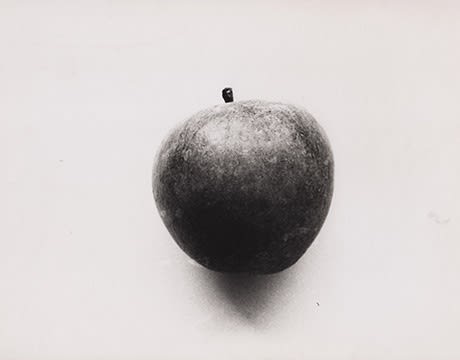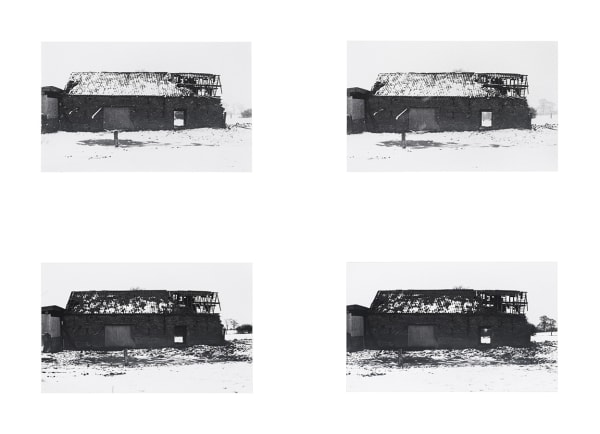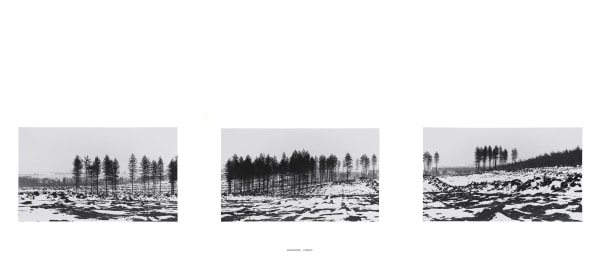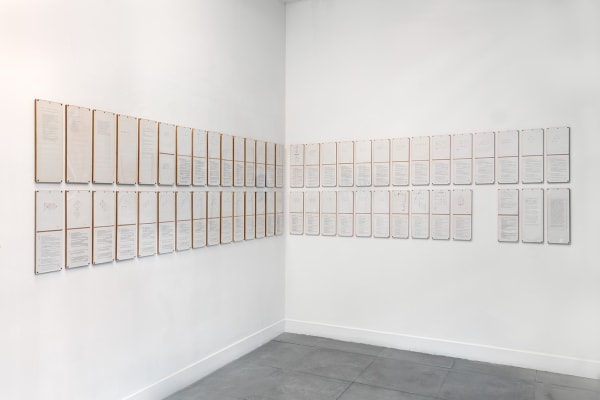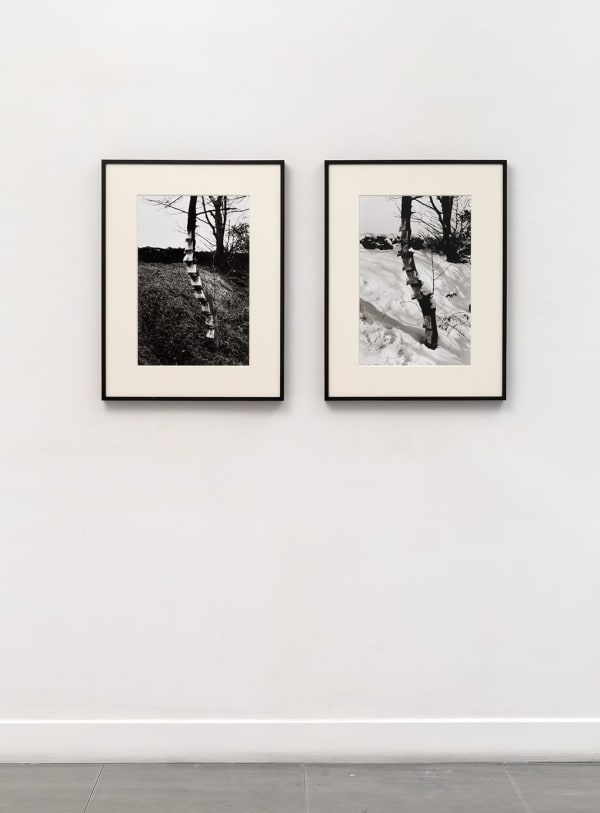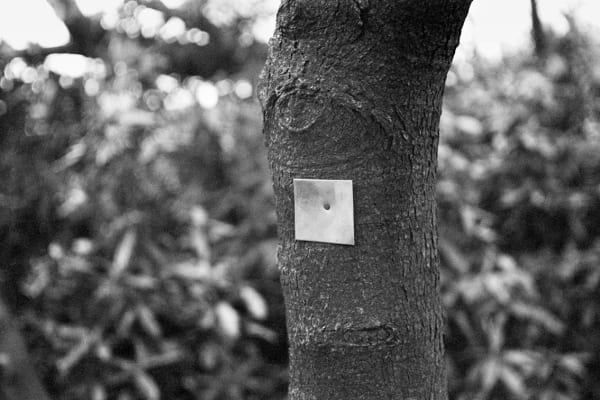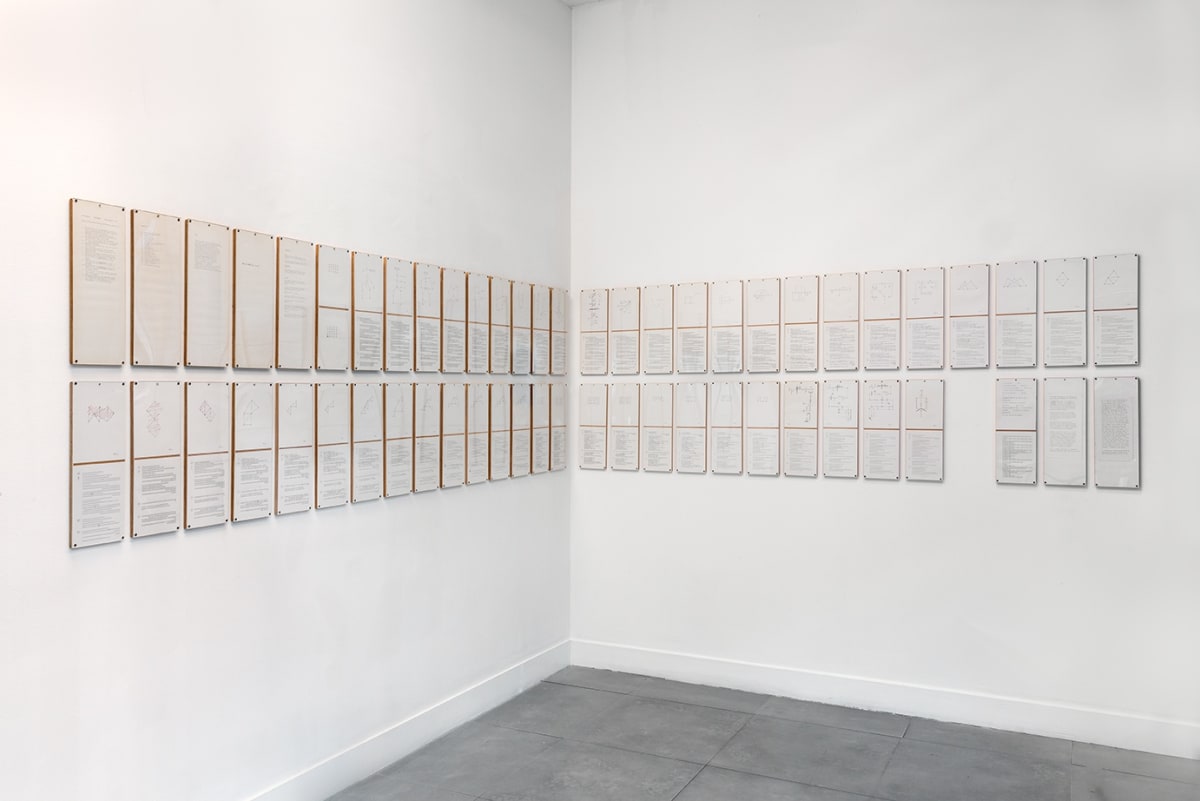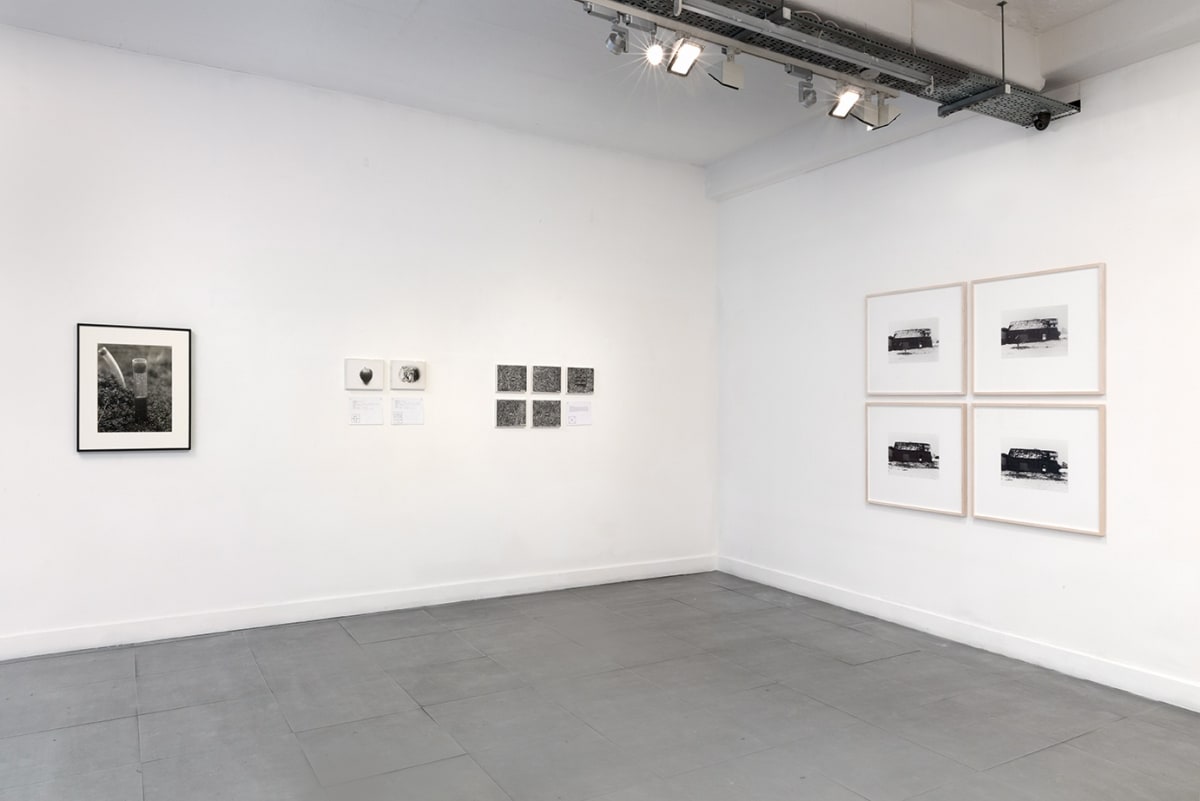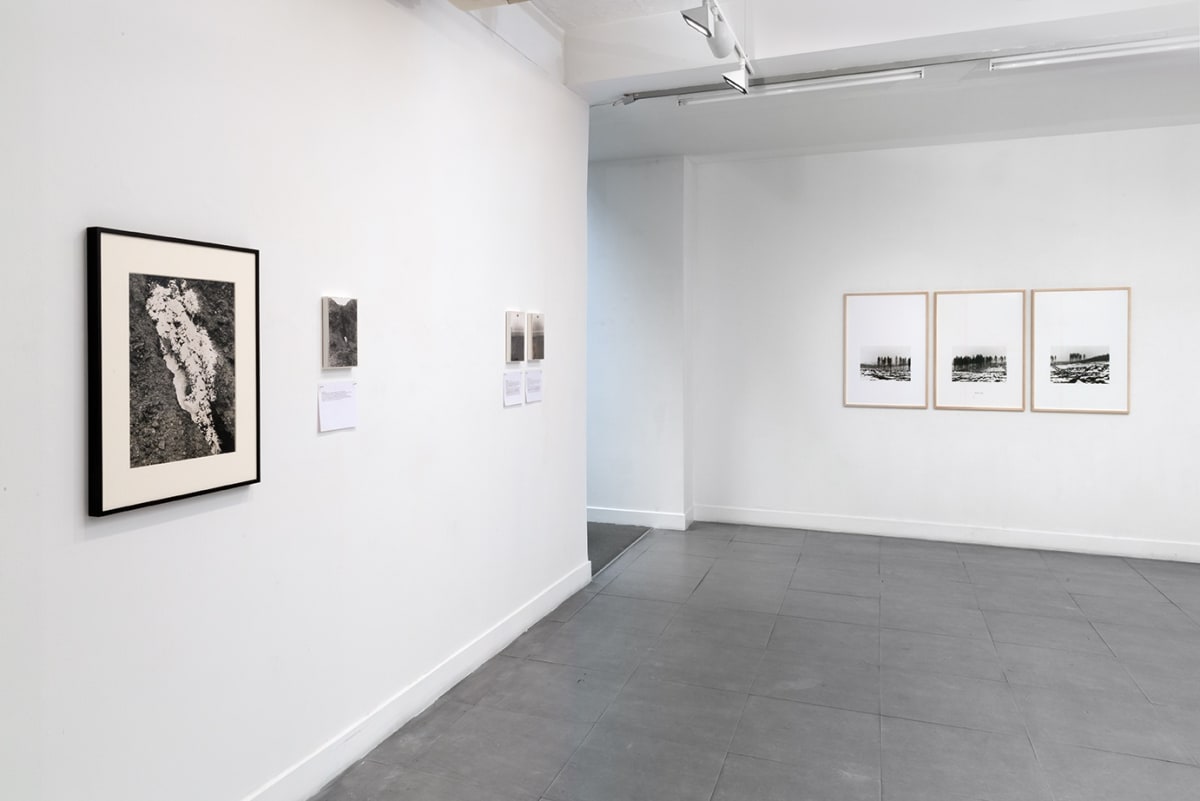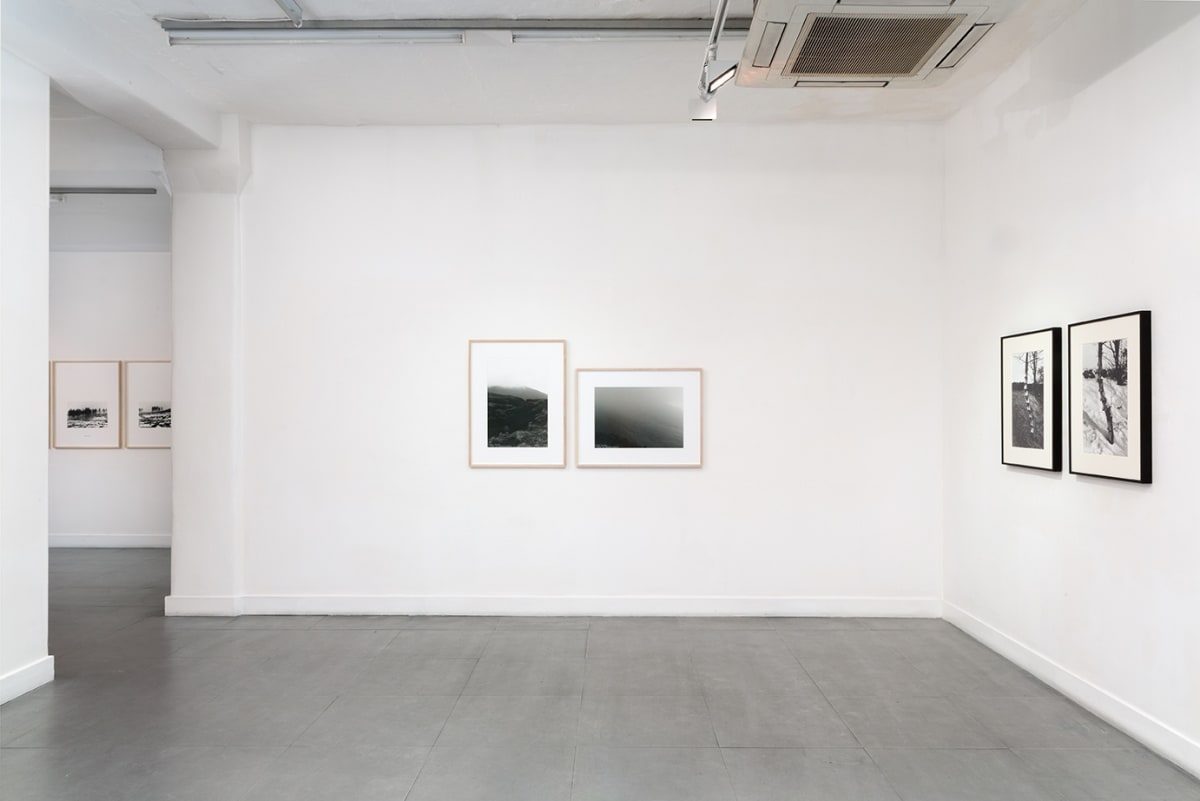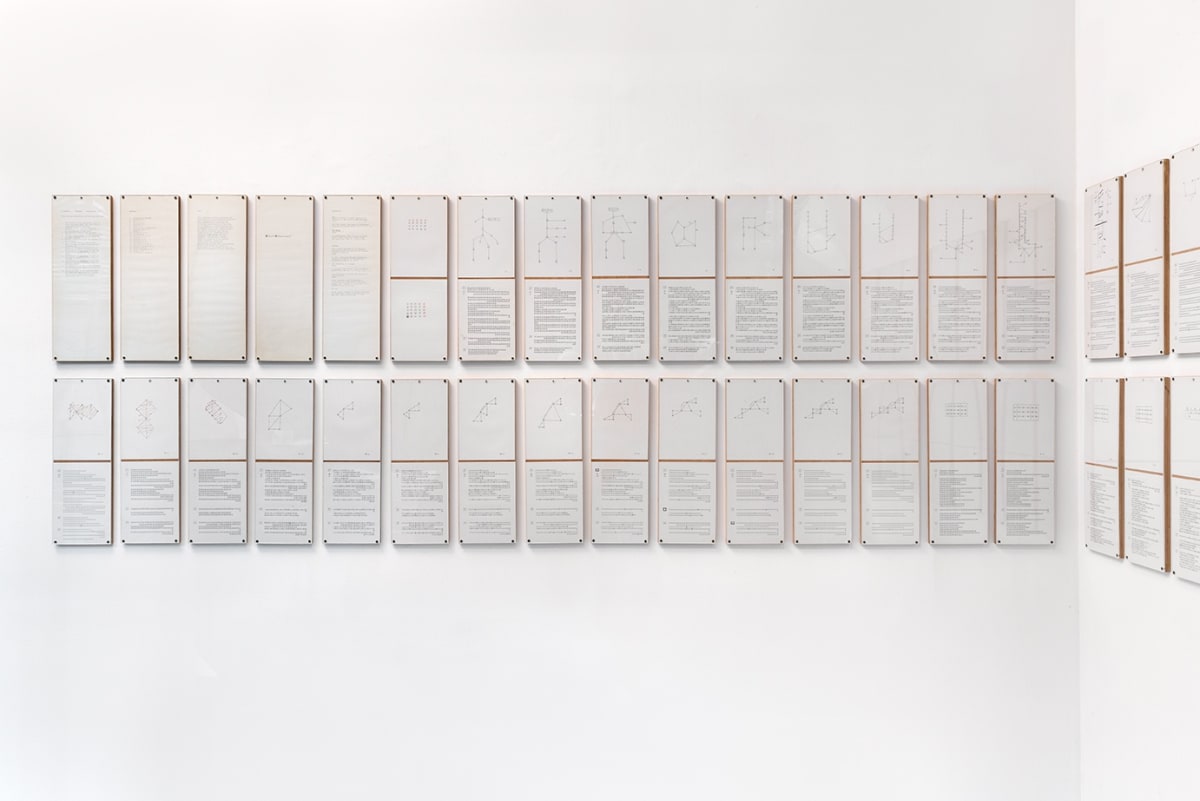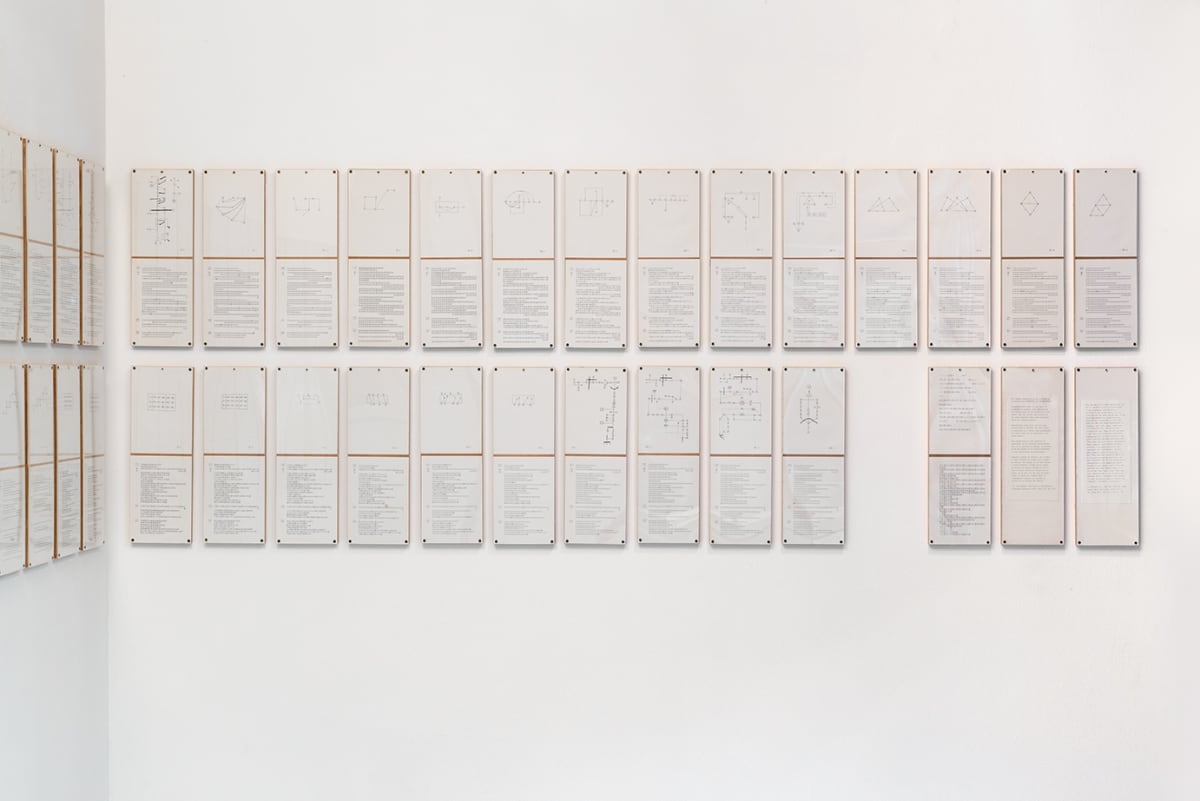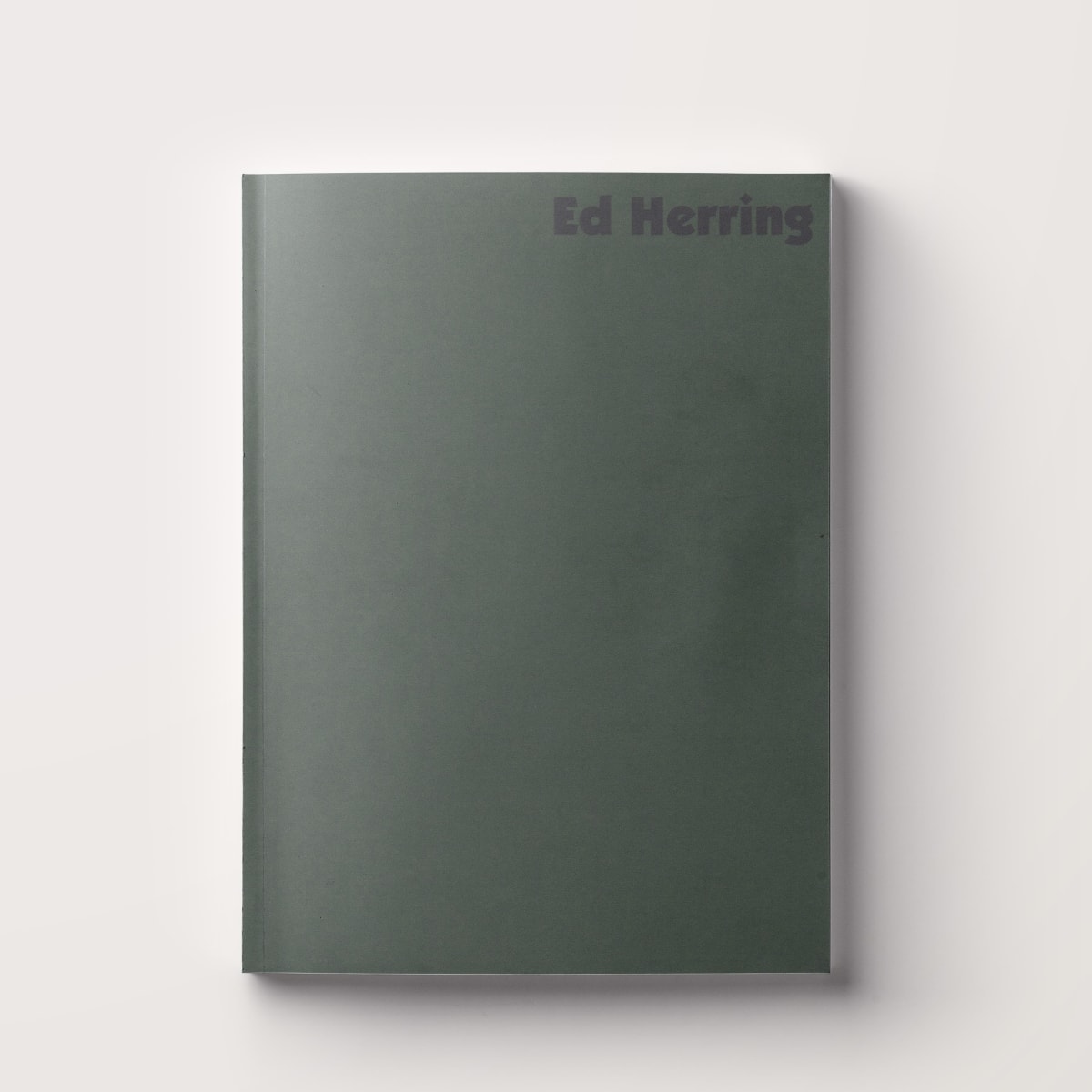Some Dimensions of my Lunch: Part 4
Part four of the gallery's series of exhibitions devoted to Conceptual art made in Britain between the 1960s and 1970s.
The final exhibition brings together two artists: Ed Herring, a land artist who first gained attention in the 1960s for his 'environmental statements'; and Roger Palmer, who combines photograph and text to subvert the traditional view of landscape.
-
 Roger PALMERCloud Falling - A ridge on Birreencorragh, 1977Pair of matt silver gelatin prints mounted on individual boards. Letraset on both, pencil border on one board. Vintage and unique84.5 x 64.5 cm and 64.5 x 84.5 cm (boards)
Roger PALMERCloud Falling - A ridge on Birreencorragh, 1977Pair of matt silver gelatin prints mounted on individual boards. Letraset on both, pencil border on one board. Vintage and unique84.5 x 64.5 cm and 64.5 x 84.5 cm (boards) -
 Roger PALMER, Wolfley Hill (Winter), 1979
Roger PALMER, Wolfley Hill (Winter), 1979 -
 Roger PALMERSherwood Forest, 19793 matt silver gelatine prints mounted on individual boards. Letraset on central board. Vintage and unique86.5 x 66 cm (each board)
Roger PALMERSherwood Forest, 19793 matt silver gelatine prints mounted on individual boards. Letraset on central board. Vintage and unique86.5 x 66 cm (each board) -
 Roger PALMER, Helvellyn Panorama, c. 1977
Roger PALMER, Helvellyn Panorama, c. 1977 -
 Ed HERRING, Grass Re-organisation, 1969
Ed HERRING, Grass Re-organisation, 1969 -
 Ed HERRINGDARN, 197257 typed and hand-drawn sheets, approximately A4 in size
Ed HERRINGDARN, 197257 typed and hand-drawn sheets, approximately A4 in size -
 Ed HERRINGOiled Earth, location moors near Woodhead, Yorkshire, 1969Gelatin print50.5 x 40.5 cm
Ed HERRINGOiled Earth, location moors near Woodhead, Yorkshire, 1969Gelatin print50.5 x 40.5 cm -
 Ed HERRING, Tea-Bag Piece, 1968-69
Ed HERRING, Tea-Bag Piece, 1968-69 -
 Ed HERRING, Zinc-plated wood, 1969
Ed HERRING, Zinc-plated wood, 1969 -
 Ed HERRINGChemical-packed cuts, location slagheap near Wigan, Lancashire, 1968-69Gelatin print51 x 40.5 cm
Ed HERRINGChemical-packed cuts, location slagheap near Wigan, Lancashire, 1968-69Gelatin print51 x 40.5 cm -
 Ed HERRING, Electric Extensions, 1970
Ed HERRING, Electric Extensions, 1970
-

Installation views at Some Dimensions of my Lunch: Conceptual Art in Britain - Part 4: Ed Herring & Roger Palmer, Richard Saltoun Gallery, 1-28 September 2016
-

Installation views at Some Dimensions of my Lunch: Conceptual Art in Britain - Part 4: Ed Herring & Roger Palmer, Richard Saltoun Gallery, 1-28 September 2016
-

Installation views at Some Dimensions of my Lunch: Conceptual Art in Britain - Part 4: Ed Herring & Roger Palmer, Richard Saltoun Gallery, 1-28 September 2016
-

Installation views at Some Dimensions of my Lunch: Conceptual Art in Britain - Part 4: Ed Herring & Roger Palmer, Richard Saltoun Gallery, 1-28 September 2016
-

Installation views at Some Dimensions of my Lunch: Conceptual Art in Britain - Part 4: Ed Herring & Roger Palmer, Richard Saltoun Gallery, 1-28 September 2016
-

Installation views at Some Dimensions of my Lunch: Conceptual Art in Britain - Part 4: Ed Herring & Roger Palmer, Richard Saltoun Gallery, 1-28 September 2016
Part four of the gallery's series of exhibitions devoted to Conceptual art made in Britain between the 1960s and 1970s.
The final exhibition brings together two artists: Ed Herring, a land artist who first gained attention in the 1960s for his 'environmental statements'; and Roger Palmer, who combines photograph and text to subvert the traditional view of landscape.
In 1970 Ed Herring took his lunch, a wrapped sandwich and an apple, and specifically measured its overall dimensions. This emphasis on recording and documenting his findings was central to his work of the late 1960s: whether using photography as a means of showing the various phases of condensation and freezing of water contained in a series of plastic bags with teabags nailed to a tree over several months (Tea-Tree, 1968-69), or of revealing the varied rates of absorption of oil by the earth as it was poured into a number of tubes implanted into a Wigan slagheap (Oiled Earth, 1969). These subtle forms of intervention questioned consumption, creation and cultural responsibilities involved in their making, and are deeply rooted in ecological and environmental concerns.
Roger Palmer’s work interrogates “that peculiar practice that many westerners seem to have adopted as a means of acquainting themselves with unfamiliar places, the habit of collecting your personal memories through photography or filmmaking”. He examines how our reading of images changes according to context and accompanying information: in a pair of photographs titled Cloud Falling - A Ridge on Birreencorragh (1977) the viewpoint is very clearly different, altered by the movement of the artist as well as the movement of clouds, yet from the overlaid text we infer it is the same scene.
Photography enabled both Herring and Palmer to develop new enquiries into duration: for Herring, the duration of time it took for the oil to level out, to the duration of time it took for the tea-water within the plastic bags to progressively change, condense, and evaporate over the winter period; for Palmer, the history layered in landscape is explored in silver gelatin photographs strategically grouped and sometimes accompanied by texts.
This final exhibition in the series illustrates the forgotten history of Conceptual art in Britain, bringing to the forefront works by two undervalued and under-recognised artists, who irrevocably changed our concept of the traditions of modern art.
Ed Herring's (b. 1945, Southport, UK; d. 2003 Montcrabier, France) best-known work of the '60s and '70s used photography and documentation to record environmental statements made in primarily unpopulated areas. His later work used combinations of language and images to construct, deconstruct, elucidate and debate the idea, signification and consumption of art and culture. He collaborated with many conceptual artists at the time, such as Keith Arnatt, Terry Atkinson, Victor Burgin, Joseph Kosuth and John Stezaker, and exhibited regularly at Camden Art Centre, notably taking over the garden during the seminal exhibition Environment Reversals (1969), and later exhibiting in Charles Harrison's Idea Structures (1970) and the Paris Biennale (1971).
Based in Glasgow, Roger PALMER (b. 1946, Portsmouth, UK) has been working as an artist and educator since the 1970s, Roger Palmer's research and practice have contributed to debates on the representation of place, as well as ideas of location and dislocation, migration and settlement. The artist has pursued a multi-media approach to image-making through photography, printmaking, wall-drawing and video. He has also made text works such as site-specific signs, billboards, neon sculptures, LED panels, vinyls, temporary paintings and drawings.
Palmer has participated in exhibitions and undertaken residencies in different international contexts, including several projects in South Africa. His work was included in Time, Words and the Camera (1976), Three Perspectives on Photography (1979) and Uncommon Ground, Land Art in Britain 1966-1979 (2013). Among the solo exhibitions: Botany Bay, Leeds City Art Gallery, Leeds (2007); International Waters II, Union-Castle House & John Hansard Gallery, Southampton (2001); Cell, Finnish Museum of Photography, Helsinki (2000); Colour Blind, National Gallery of South Africa, Cape Town (1993); Precious Metals, travelling, among others: California Museum of Photography, Riverside, CA, Serpentine Gallery, London, John Hansard Gallery, Southampton, Third Eye Centre, Glasgow, Watershed, Bristol (1987); Roger Palmer, National Museum of Photography, Film & Television, Bradford (1984).
This four-part exhibition, co-curated by Joy Sleeman and Richard Saltoun, has taken over three years to organise. Much of the work is either being shown for the first time or not seen since it was first exhibited.
Other exhibitions in the series include:
Part 1: Roelof LOUW
19 May – 17 June
Part 2: Focus on Marie YATES
24 June – 22 July
Part 3: Focus on Tony MORGAN / John BLAKE
28 July – 26 August
